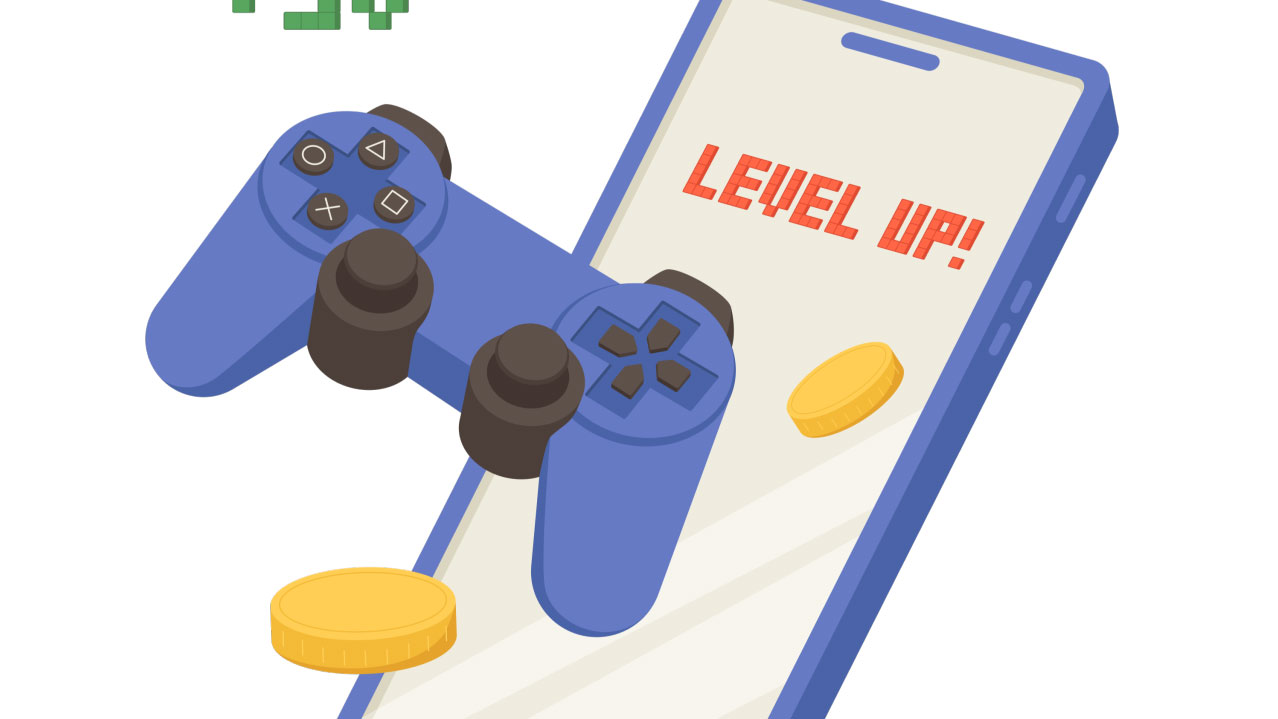
Level Up! The Art of Designing Game Progression and Player Rewards
In any game, progression is about more than just leveling up. It’s a journey. A well-designed progression system keeps players engaged, drives their actions, and ultimately defines their experience. But how can you make progression rewarding without making it feel like a chore? In this blog, we’ll dive into the design philosophies behind effective progression systems, and explore how to keep players invested, excited, and coming back for more.
Why Progression Matters
Think about your favorite games. Whether it’s unlocking powerful new skills in Assassin’s Creed, building out your character’s backstory in Cyberpunk 2077, or collecting badges in Pokémon, progression creates a sense of personal growth and achievement. Games with strong progression systems reward players with a tangible sense of accomplishment, giving them new tools, insights, or areas to explore. But crafting this experience takes more than just adding extra rewards or levels. Let’s explore the principles that make progression meaningful.
Core Elements of Game Progression

In game design, progression systems and reward mechanisms are essential to keeping players engaged and motivated. These systems provide a sense of achievement, encouraging players to continue their journey through challenges and accomplishments. Game designers craft both intrinsic rewards, which fulfill players’ internal sense of satisfaction, and extrinsic rewards, which offer tangible perks and collectibles that enhance the gaming experience. Balancing these reward types and pacing them with a mix of short-term and long-term incentives is crucial for sustaining player interest and ensuring a fulfilling progression.
Reward Systems that Motivate Players
Intrinsic vs. Extrinsic Rewards
Game designers use two main types of rewards: intrinsic (internal satisfaction) and extrinsic (external rewards). Intrinsic rewards are driven by the player’s own sense of accomplishment and enjoyment of the game’s narrative or mechanics. For example, in The Witcher 3, the satisfaction of completing a quest or making meaningful decisions aligns with intrinsic motivation, as players feel their actions are influencing the world around them. They’re driven by the story, character development, or the sheer joy of exploration. This deeper, personal sense of fulfillment often keeps players engaged over the long term.
On the other hand, extrinsic rewards are tangible, often offering external validation or recognition. These rewards could range from unlocking new outfits or powerful gear, to gaining in-game currency, trophies, or achievements. The Witcher 3 also offers these external motivators, such as acquiring rare weapons or armor sets, which improve the player’s performance and provide a visual representation of their progress. This blend of intrinsic and extrinsic rewards keeps the player engaged from multiple angles, ensuring both the emotional satisfaction of character growth and the tangible sense of accomplishment through loot and upgrades.
Balancing Short-Term and Long-Term Rewards
Effective game design requires a careful balance between short-term rewards, which offer immediate gratification, and long-term rewards that maintain motivation over time. A game with too many immediate rewards may risk overwhelming the player with constant gratification, leading to a lack of challenge or engagement in the long run. On the other hand, a game with only long-term rewards might frustrate players, making them feel like their efforts are unappreciated or that they are not making visible progress.
For example, Fortnite strikes a balance by offering immediate rewards in the form of new skins, emotes, or other cosmetic items through its Battle Pass system. Players can unlock these rewards relatively quickly, giving them a sense of progression and instant satisfaction. However, Fortnite also has long-term goals, such as completing challenging missions, leveling up the Battle Pass over time, or unlocking exclusive rewards that can’t be obtained immediately. This encourages players to keep playing and working toward the bigger rewards, creating a satisfying mix of short-term satisfaction and long-term goal setting. The progression system allows players to feel rewarded both in the moment and over a sustained period, making them more likely to keep coming back.
The Psychology of Progression: Why We Love Rewards
Rewards in games play a crucial role in tapping into our brain’s reward system, which releases dopamine, a chemical that makes us feel good. When players achieve something significant, like leveling up or conquering a challenging boss, they experience a rush of satisfaction that motivates them to keep playing. This sense of progression not only delivers that rewarding feeling but also gives players a sense of purpose. With clear goals to strive for, players find their time spent in the game meaningful and fulfilling.
Game designers skillfully craft these rewarding moments to keep players hooked. They use visual and auditory cues, such as flashy animations or satisfying sounds when unlocking new abilities, to reinforce the connection between effort and achievement. For instance, in the Soulsborne series, after defeating a formidable boss, players are greeted with a moment of silence and triumphant visuals, allowing them to savor their hard-fought victory. This sensory feedback deepens the emotional impact of rewards, making each achievement feel even more significant and exciting. Ultimately, these elements create a compelling experience that keeps players engaged in their gaming journey.
Types of Progression Systems in Games

Progression systems are a core element in many games, allowing players to develop their characters, unlock abilities, and experience a sense of growth and achievement. Different types of progression offer distinct experiences, from traditional level-based systems to story-driven evolutions, each providing unique pathways for players to engage with the game world.
- Level-Based Progression
Lies of P is a unique action RPG inspired by the story of Pinocchio, where players navigate a dark Belle Époque-inspired world. As players battle challenging foes and bosses, they earn experience points that enhance their character’s abilities and unlock new combat skills. The progression system keeps players motivated as they refine their combat style and discover new ways to overcome the game’s intricate challenges.
- Skill Trees and Upgrades
Star Wars Jedi: Survivor introduces a rich skill tree system that allows players to customize their Jedi’s abilities and combat style. As players progress through the story and defeat enemies, they earn skill points that can be invested in various abilities, including lightsaber combat and Force powers. This level of customization empowers players to create a Jedi that suits their preferred playstyle, enhancing the overall experience as they explore the vast galaxy.
- Story-Based Progression
Baldur’s Gate 3 excels in story-based progression, where character development is intricately tied to player choices and narrative outcomes. As players engage with various factions and make pivotal decisions, their character’s skills and relationships evolve, impacting the overarching plot and character interactions. The sense of progression comes not just from leveling up but from the rich, branching narrative that keeps players engaged in the world and its characters.
Balancing Challenge and Reward

When designing games, it’s crucial to find the right balance between challenge and reward. If rewards come too frequently, they can lose their impact, leaving players feeling unfulfilled. On the other hand, if rewards are too scarce, players may become frustrated or discouraged.
- In Remnant 2, players experience a balanced mix of intense combat and meaningful progression that makes each victory feel rewarding. The game pushes players to think strategically about their weapon and skill choices, encouraging them to adapt as they encounter diverse enemies and environments. Conquering each formidable boss isn’t just a matter of strength but also of skill, timing, and preparation, which makes defeating them feel like a significant achievement.
The rewards in Remnant 2 heighten this sense of accomplishment. Rather than focusing solely on traditional leveling systems, players earn unique loot and character upgrades, enhancing gameplay and keeping players motivated. These well-timed rewards give players a sense of growth and mastery, encouraging them to continue pushing their limits as they progress through the game’s challenging journey.
In-Game Currencies and Unlockables

In-game currencies, collectibles, and unlockable content create a rewarding loop for players, giving them goals that keep them engaged. These systems can add depth and long-term motivation, especially when they offer items that players feel are truly worth their effort.
- In Hades II, players earn in-game currency by battling through dungeons, which they can use to unlock powerful weapons, new abilities, and upgrades that change their gameplay strategy. The pursuit of unlockable upgrades and collectibles adds excitement with every run, giving players meaningful progress even after multiple attempts.
- In The Finals, a first-person shooter, players earn in-game currency to unlock distinctive cosmetic items that help personalize their characters in a highly competitive arena setting. This currency system offers players a unique way to express themselves through cosmetic rewards, enhancing their connection to the game even after mastering its mechanics.





